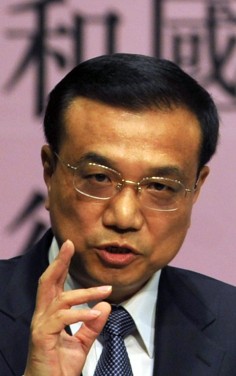
Freedom on China's loan rates symbolic, analysts say
Central bank maintains grip on deposit rates to avoid competition among banks but that also limits room to lower lending costs, analysts say
The mainland's latest decision to let banks set lending rates freely by removing an artificial floor is another gesture from the new leadership to deepen economic reform without actually doing anything that introduces significant harm to vested interest groups.
The government has refrained from lifting the caps on deposit interest rates, out of concern that doing so would stir unwanted competition among banks. It is maintaining a cautious stance towards reforms as it pursues stable economic growth amid a downturn.

However, analysts say there has been more talk than action this year, as the government also faces challenges posed by a cooling domestic economy. Growth eased to 7.5 per cent in the second quarter, after registering 7.8 per cent in 2012, the lowest in 13 years.
Many China observers welcomed the central bank's removal of the floor of lending rates, which were previously set 30 per cent lower than benchmark interest rates. But they said the move was largely symbolic and would have little immediate impact on the economy.
"It is a good step but far from a decisive one on the road to Chinese rebalancing," said Stephen Roach, a Yale University professor and former non-executive chairman for Morgan Stanley in Asia.
"A more decisive step would have been a liberalisation of deposit rates - an action that could boost personal income by at least 5 percentage points as a share of Chinese [gross domestic product] and play an important role in the long-awaited pro-consumption rebalancing."
Hopes had been high among China advisers that Li would undertake a more drastic move and give banks more flexibility to price deposit rates in order to introduce competition.
However, the central bank's decision to maintain the ceiling, at 10 per cent higher than the benchmark deposit rates, makes it hard to predict when that step might occur.
"The fact that this has not happened reflects the government's cautious stance," Goldman Sachs analysts, led by Song Yu, said in a research note.
"We believe this is still a likely move down the road, though the timing is highly uncertain."
The artificial gap between the lending and deposit rates set by the central bank has helped major state-owned lenders, such as Industrial and Commercial Bank of China, to expand quickly and become the world's most profitable banks. They are also part of the vested interest groups that have strong lobbying power.
State enterprises have had access to good deals because of their close connections with state lenders and strong bargaining power. Small and private companies have been forced to borrow at much higher interest rates, with many turning to underground lending or shadow banking.
Constraints on the system have helped spawn the shadow banking system, and analysts fear the off-balance-sheet lending is so large that it could trigger a financial crisis if the economy slowed sharply.
Analysts said banks had limited room to lower lending costs immediately, partly because deposit rates had not been liberalised. The recent credit crunch has also pushed up financing costs. Central bank data showed only 11 per cent of bank loans were priced below the benchmark rates in the first quarter.
Although the government's reform was originally designed to help the private sector, analysts say the easing control over credit costs may still benefit state-owned firms the most because of their greater bargaining power.
"To some extent, it could be regarded as a 'stimulus' to the real economy as the [state-owned enterprises] will face a lower effective borrowing rate, and would help the economy pick up somewhat in late Q3 and Q4," ANZ Bank said in a research report. That would make the government's 7.5 per cent growth target more achievable, it said.

